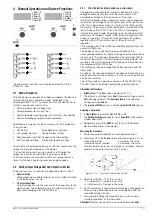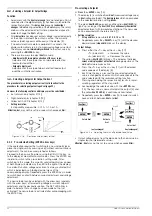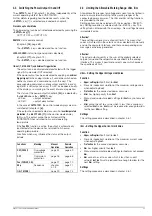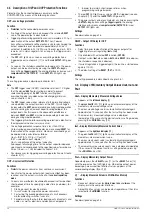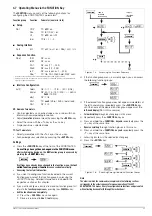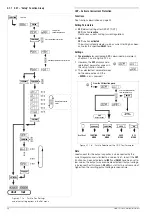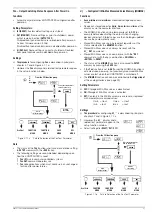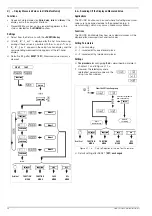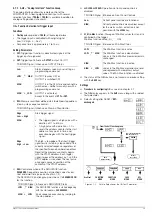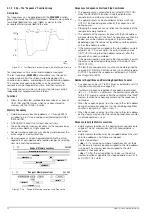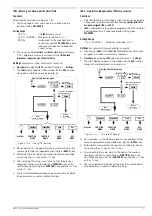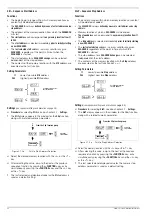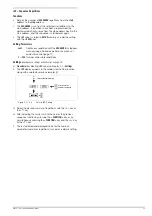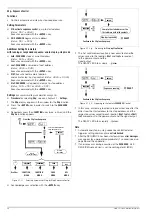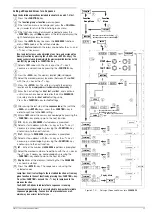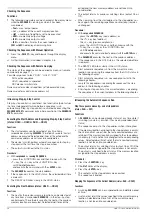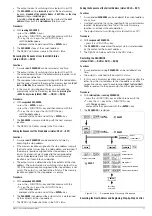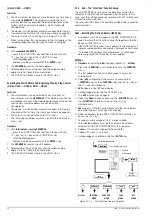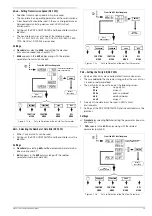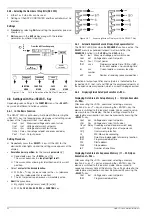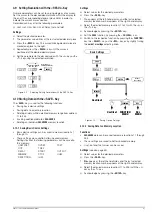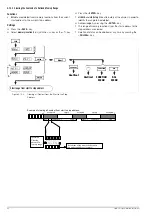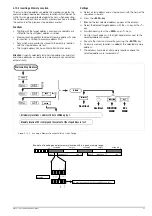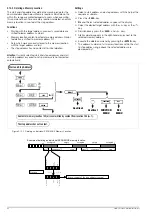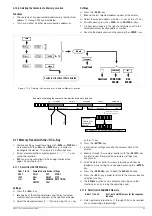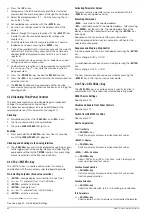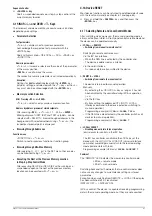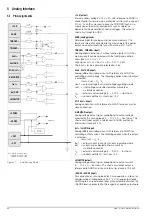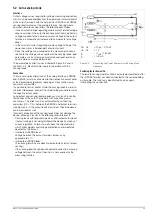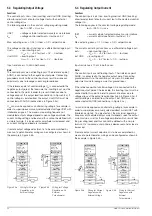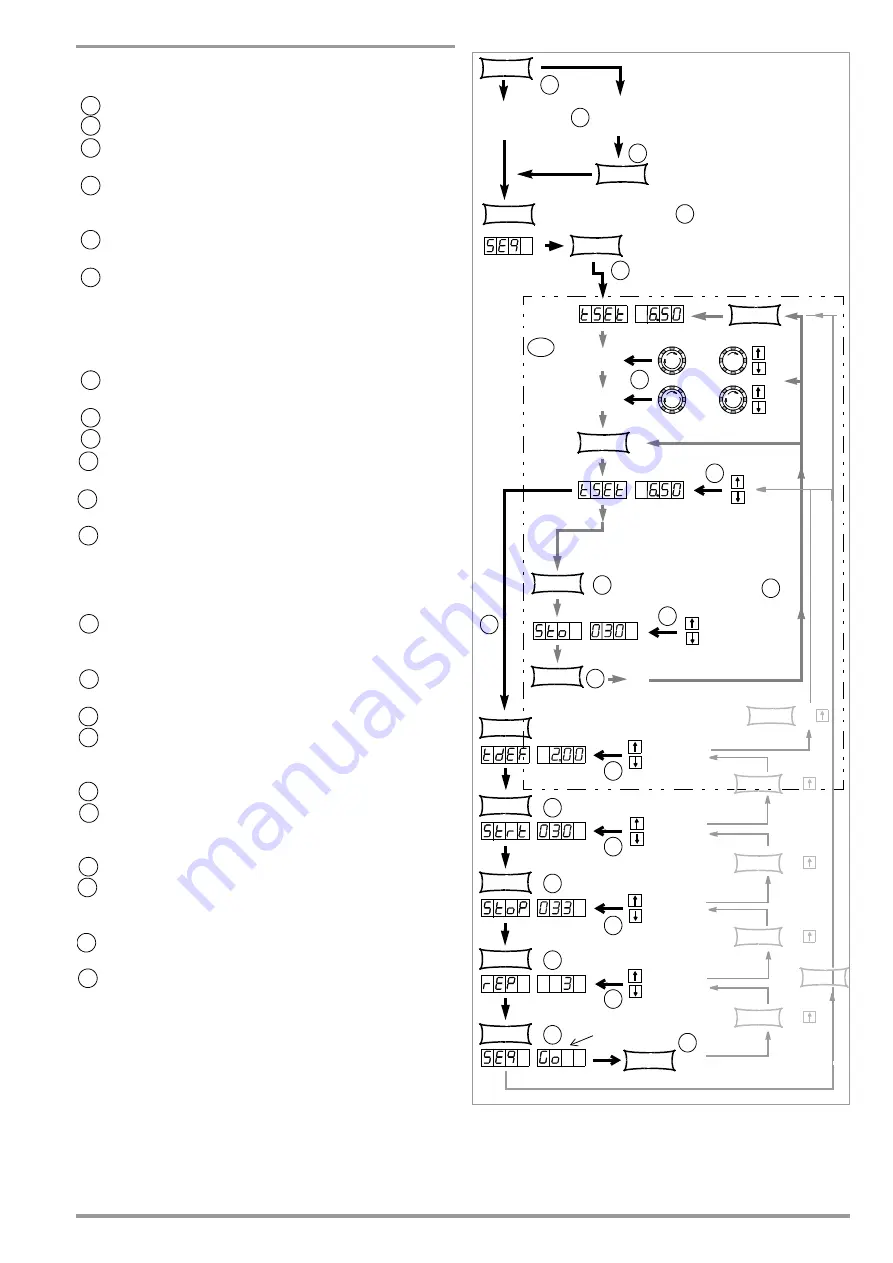
GMC-I Gossen-Metrawatt GmbH
35
Setting all Required Values for a Sequence
Read the detailed explanations included in chapter 4.6 and 4.7.3 first.
1 Press the
<FUNCTION>
key.
2 The
function group
or
function
menu appears.
3 If the function menu is not displayed, press the
<CE/LOCAL>
key in order to return to the function groups menu.
4 If the functions menu is displayed, repeatedly press the
<FUNCTION>
key until
SEq
appears at the left-hand display (the
right-hand display remains blank).
5 Press the
<ENTER>
key to access the
SEQUENCE
functions
menu.
tSEt
appears at the left-hand display.
6 Adjust
Uset
and
Iset
with the rotary knob and/or the <
↓
> and
<
↑
> keys if necessary.
[Uset and Iset values can be adjusted at any time, and assigned to a
memory location by pressing the <SAVE> and <ENTER> keys.] The
display can be returned immediately to the previously edited function (in this
case tSEt) by pressing the <FUNCTION> key.
7 Select a
tSEt
value with the <
↓
> key or the <
↑
> key if
necessary, and continue by pressing the <
FUNCTION
> key.
8 ...
9 Press the <
SAVE
> key. The memory location (
Sto
) is displayed.
10 Select the desired memory locations (between
11
and
255
)
with the <
↓
> key or the <
↑
> key.
11 Press the <
ENTER
> key. The setting is stored to the memory
location and the
memory address
is automatically increased by 1.
12 Enter the next setting for
Uset
,
Iset
and
tset
, and continue
until all values have been entered for the entire
SEQUENCE
.
Use rotary knobs for
Uset and Iset
settings only.
Press the
<FUNCTION>
key for
tset
settings.
13 After saving the last step of the
sequence loop
(13a) with the
<SAVE>
and
<ENTER>
keys, press the <
FUNCTION
> key in
order to continue to the
tdEF
setting.
14 Enter a
tdEF
value if necessary, acknowledge by pressing the
<
FUNCTION
> key and/or jump to the next function.
15
Strt
- Entry of a
SEQUENCE
start address is prompted.
16 Select a start address with the <
↓
> key or the <
↑
> key if
necessary, acknowledge by pressing the <
FUNCTION
> key
and/or jump to the next function.
17
StoP
- Entry of a
SEQUENCE
stop address is prompted.
18 Select a stop address with the <
↓
> key or the <
↑
> key if
necessary, acknowledge by pressing the <
FUNCTION
> key
and/or jump to the next function.
19
rEP
- Entry of the number of
SEQUENCE
repetitions is prompted.
20 Select the desired number of repetitions with the <
↓
> key or
the <
↑
> key if necessary, acknowledge by pressing the
<
FUNCTION
> key and/or jump to the next function.
21
SEq
Go
blinks at the displays, indicating that the
SEQUENCE
can now be started.
22 Press the <
ENTER
> key. The sequence is run using the
selected values.
Jump from Uset / Iset settings to the last edited function, or from any
given function to the next function by pressing the <FUNCTION> key.
Press the <FUNCTION> key and the
<
↑
>
key to jump back to the
previous function.
The READY LED blinks to indicate that a sequence is running.
The example included here is only intended to demonstrate reliable
sequence programming. You can use other procedures as well,
which may be easier or faster for you.
Figure 4.7.3 i
Setting all Required Values for a
SEQUENCE
ENTER
ENTER
SAVE
– The start address must be entered.
– The ENTER key then increases
FUNCTION
FUNCTION
FUNCTION
FUNCTION
FUNCTION
ENTER
FUNCTION
Function
Group Menu
Function
Menu
CE/LOCAL
FUNCTION
Repeatedly press the FUNCTION key
until SEq appears at the left-hand display
or
or
Uset
Iset
FUNCTION
the address by 1 automatically.
11
1
2
3
4
5
6
7
9
10
12
13
14
15
16
17
18
19
20
21
13a
Display blinks
22
FUNCTION
FUNCTION
+
FUNCTION
+
FUNCTION
+
FUNCTION
+
FUNCTION
+
FUNCTION

